How are plain bearings constructed?
Lars Butenschön | 4. March 2022
One of the main features of plain bearings – compared to ball or rolling bearings – is their significantly less complex design. But is that really the case? In fact, different types of plain bearings differ significantly in how they are constructed and how they work. In this blog post, you will learn all about the structure of the most common plain bearings.
Basic information about the structure: how plain bearings slide
Plain bearings all work on the basis of the same principle. The surface of moving components rubs or slides over the surface of the plain bearing. Various measures can be taken to minimise friction. These range from plastic coatings that are as soft as possible and slide well, up to the mere addition of lubricating grease. Since each of these technologies in turn places different requirements on the structure of the plain bearing, there are accordingly many different plain bearing types.
Solid plain bearing with lubrication grooves
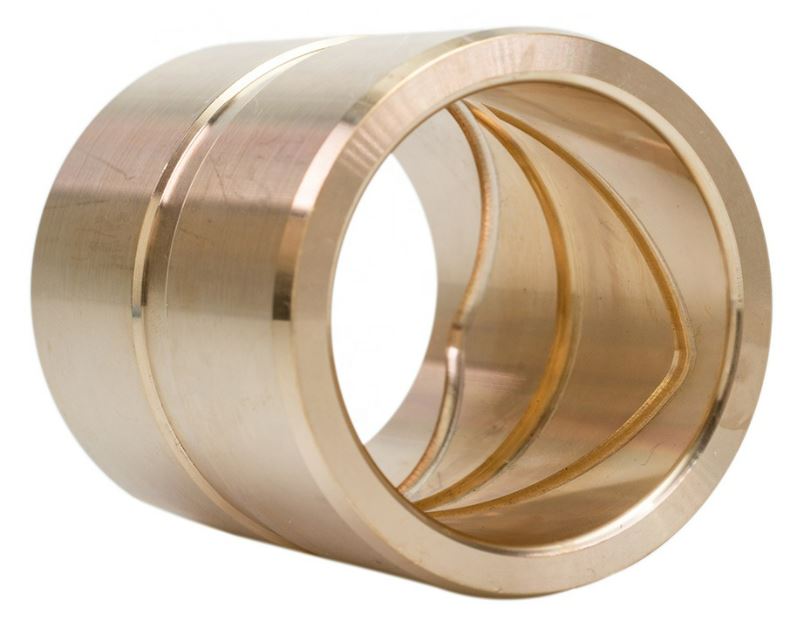
As the name implies, solid plain bearings are solidly built. That is, they are made of a solid material. Often these bearings are made of steel, bronze or other metals. The sliding properties of these bearings are obtained by lubrication channels or lubrication grooves, which are made in the surface of the bearings. Through these channels, the grease is better distributed throughout the bearing position. However, this also means that the bearing position must be permanently lubricated. For this purpose, solid plain bearings can support large loads and are therefore frequently used in larger bearing positions. However, due to the complex processing and solid material, they are also relatively expensive.
Structure of sintered bearings
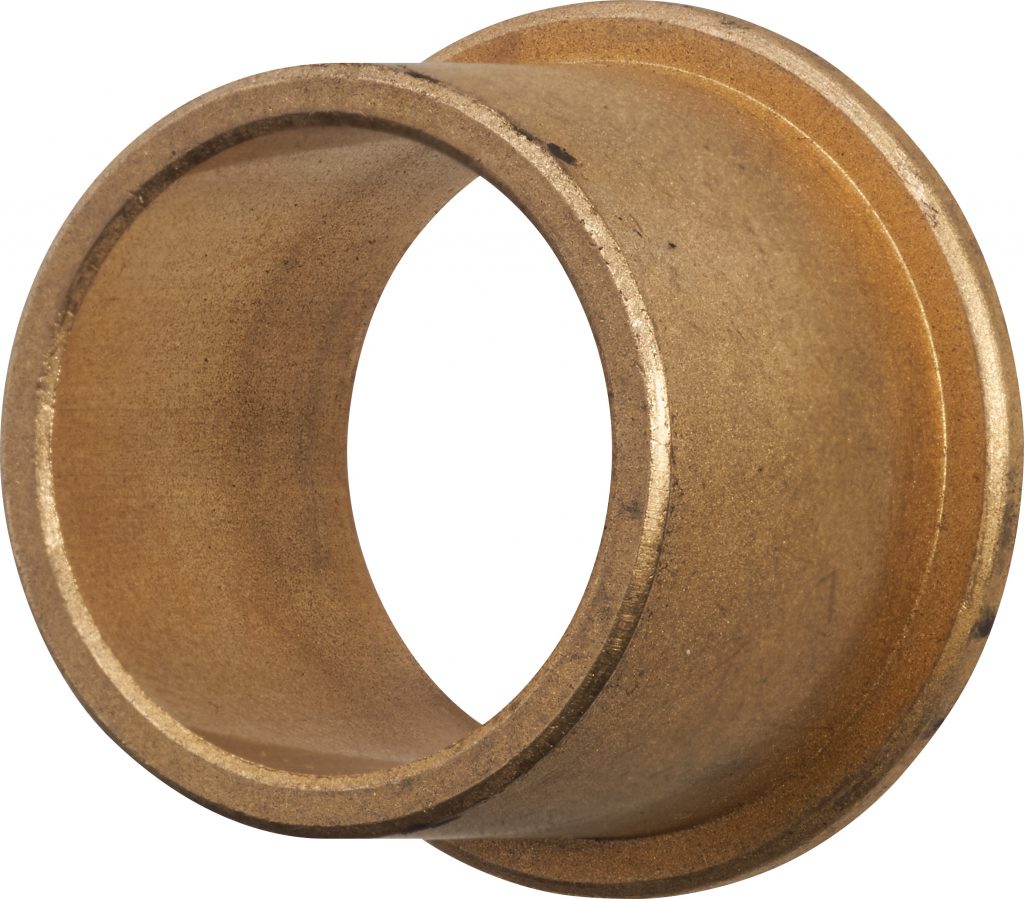
Sintered bearings are named after their method of manufacture. They usually consist of bronze powder, which is compressed under high pressure and high temperatures. This process is called sintering. Due to the grain size of the powder, the bearing has pores after production. They serve a similar purpose to the lubrication channels in solid bearings. The sintered bearings are soaked in oil, which then settles in the pores. In operation, the oil in the sintered bearing is heated by the frictional heat and loses viscosity. This makes it more fluid and releases it from the pores. The bearing position is lubricated. Sintered bearings are relatively cost-effective and can also be manufactured in thicker wall thicknesses. Due to their mode of operation, they are particularly suitable for bearing positions with higher rotational speeds and rather less for slow swivel movements.
Structure of metal composite bearings
Metal composite bearings consist of several interconnected materials that have different specifications. Metal composite bearings usually consist of a metal sheet rolled into shape. The sheet metal is coated with a sliding-optimised plastic layer, which then provides the sliding properties of the bushing on the inside. PTFE or POM are frequently used as sliding materials. PTFE has such good sliding properties that the bushings with PTFE coating do not require additional lubrication with grease or oil. The disadvantage: PTFE is so soft and slides so well that it is difficult to fix and very susceptible to mechanical stress. To counteract these effects, the soft material is rolled onto the specially pre-treated sheets before they are rolled into bushing form. To ensure that the PTFE adheres to the sheet after rolling, a layer of porous bronze is often sintered on beforehand.
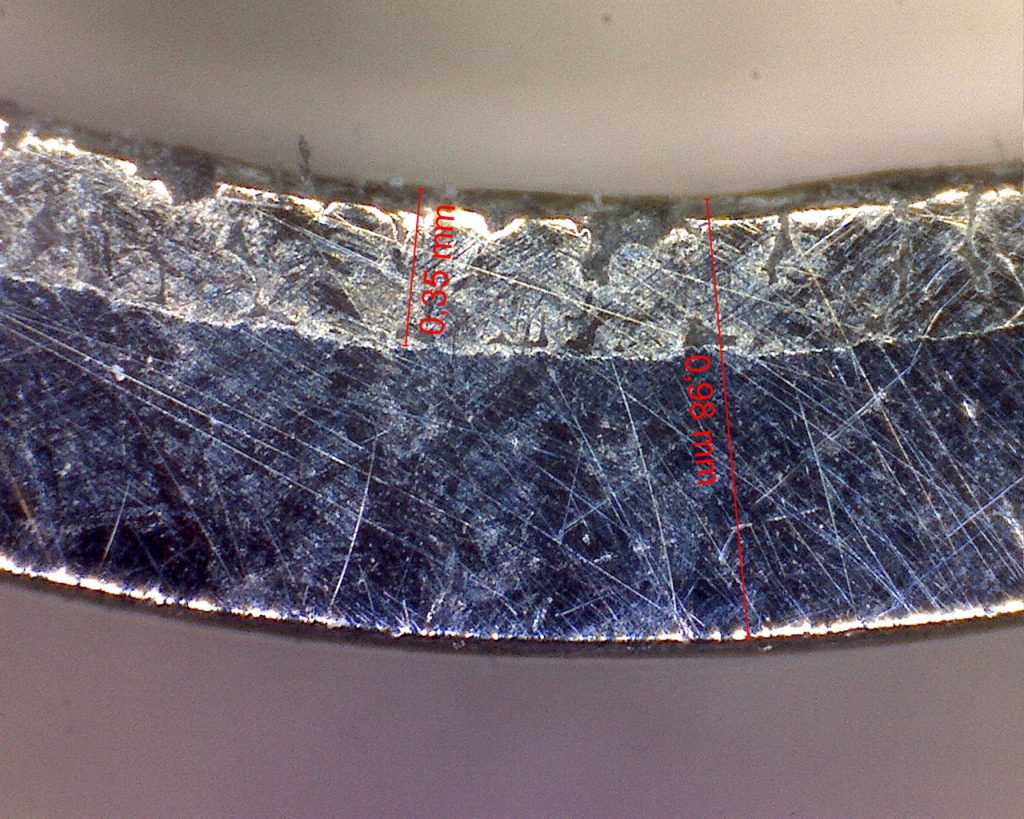
Metal composite bearings are relatively cost-effective, are suitable for various applications and, depending on the design, do not require additional lubrication. Depending on the design, corrosion may occur in humid environments. In addition, the extremely thin gliding layer is relatively sensitive to mechanical stress.
Structure of composite plain bearings
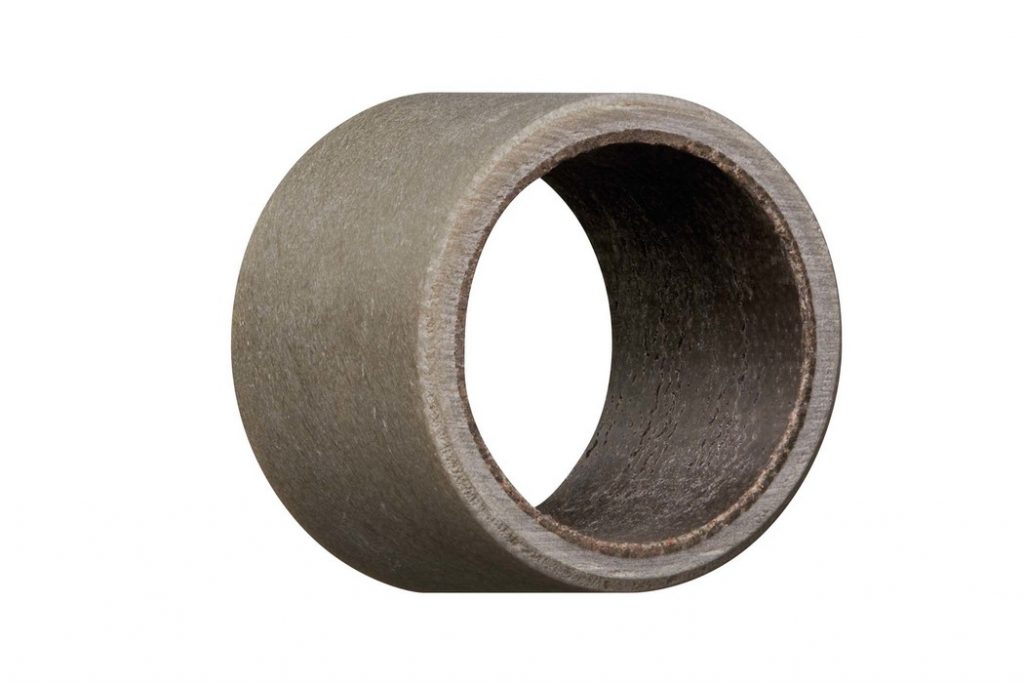
Composite plain bearings are also a composite of different materials. In practice, however, this is understood to mean plain bearings consisting of fibre composites. For this purpose, for example, mineral (glass, carbon), natural (cotton) or plastic fibres are woven together with synthetic resins and other additives and sometimes pressed together under high temperatures and pressure. This results in high-strength bearings whose strength can even approach that of metallic bearings, depending on the type of load. Different winding and weaving techniques can also be used to create different layers, which in turn have different specifications. A robust fabric often serves as the outer shell, while an inner layer optimised for sliding properties reduces friction in the bearing.
Composite plain bearings can support very high loads and are therefore mainly used in large equipment such as agricultural, construction and mining machinery. Depending on the design, they may require additional lubrication. However, many variants are also suitable for dry operation. Compared to solid metal bushings, they are often less cost-effective in larger dimensions and are also corrosion-free and optionally lubrication-free.
Structure of plain bearings made of solid plastic
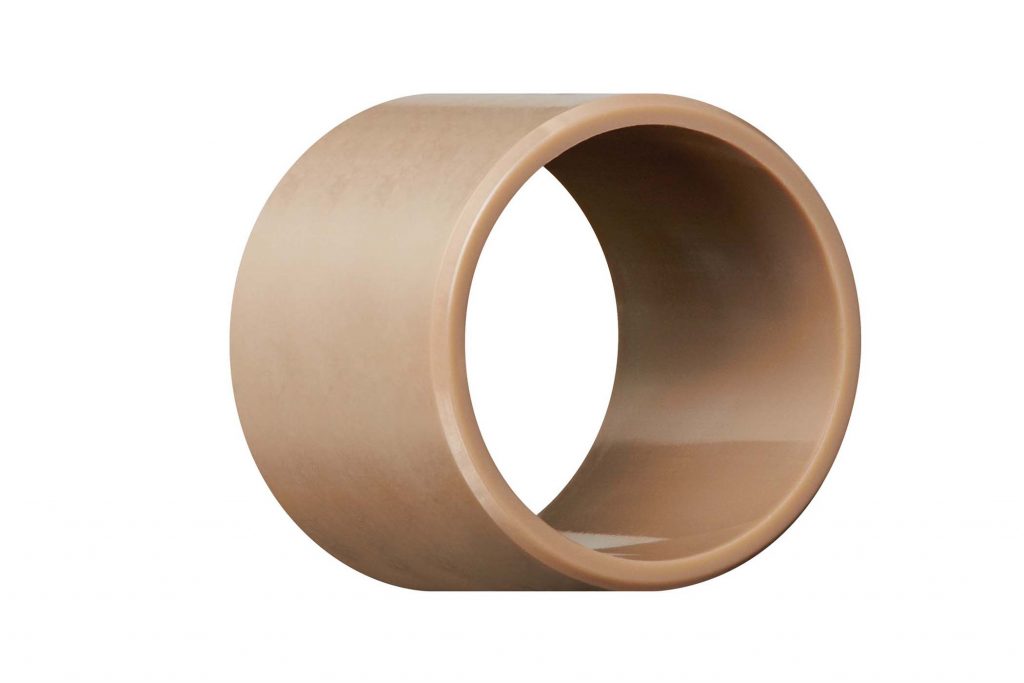
Plain bearings made of solid plastic, sometimes also called polymer plain bearings, are – as the name suggests – made of plastic. These are often injection moulded or bar stock components. 3D printing or laser sintering are also common manufacturing processes. Many plastics are suitable for use in plain bearings. Depending on the type, they also have other specifications, such as high chemical resistance or resistance to high temperatures up to approx. 300°C. Since these plastics are available in pellet form before processing, they can be mixed relatively easily with other ingredients such as fibres or fillers, as well as additives. This mixture of materials is then fused in the processing stage. This results in components whose specifications go beyond those of the plastics originally used. In this way, very strong or exceptionally sliding plain bearings can be produced.
The advantage of these plain bearings lies in their homogeneous structure. The more robust support material and the sliding material are not in the form of separate layers, but are distributed throughout the component. In addition, the low-cost manufacturing process is suitable for particularly large quantities. Most plastic plain bearings also do not require additional lubrication.
But which plain bearing is the best for your project? We shall provide you with advice!
Which plain bearing is best suited for your application depends on many factors. We analyse your storage location for you and determine the most favourable and reliable solution together with you. igus offers everything from a single source. Expert advice, state-of-the-art manufacturing technologies and the largest catalogue selection of plastic and composite plain bearings.

